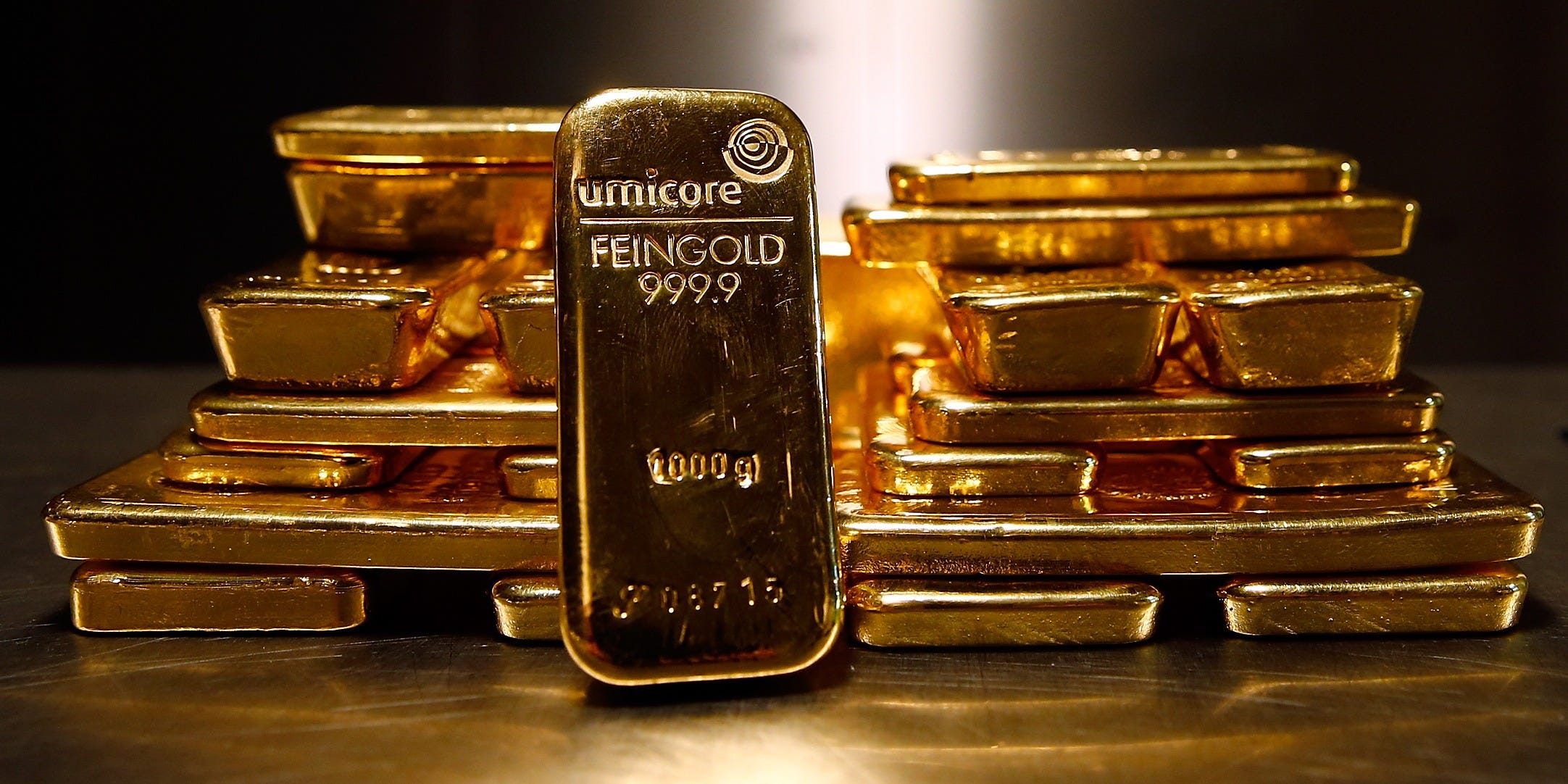- Spot gold prices fell below $2,000 in its biggest one-day decline in seven years, dropping off a multi-week rally on Wednesday.
- In the last few weeks, the precious metal hit its most expensive level ever, but analysts warn that a Joe Biden presidency and the untimely distribution of a COVID-19 vaccine could derail its surge.
- Gold has come from being owned by central banks and very wealthy people wishing to preserve capital to increasingly becoming the focus of retail investors, said Ole Hansen, head of commodity strategy at Saxo Bank.
- Markets Insider compiled 5 reasons why the outlook for gold is still bright.
- Visit Business Insider’s homepage for more stories.
Gold has retreated this week below the $2,000-an-ounce-mark, notching up its biggest one-day fall in over seven years on Tuesday, as investors cashed in on a rally that has driven the price to unprecedented levels.
In the last few weeks, gold vaulted to record highs above $2,000, driven by hopes that US lawmakers would approve another trillion-dollar stimulus bill aimed at cushioning the economic impact of coronavirus.
Gold was last up around 1.6% on the day at $1,954 an ounce. On Tuesday, it crashed by almost 6%, or over $100, its biggest one-day loss since June 2013. The price, however, is still up by nearly 30% this year.
Governments and central banks around the world have unleashed trillions of dollars of historic financial aid to prevent the global economy from sliding into a Depression-like era of sky-high unemployment, mass bankruptcies and poverty.
The tidal wave of cash that has hit the financial markets has lifted gold, and a number of other assets such as equities, to their highest ever. Additionally, gold has profited from investor anxiety over an uncertain economic outlook, as well as rising geopolitical tensions, most notably between the US and China.
Some analysts have warned that a Joe Biden presidency in the US and an early rollout of an effective vaccine against COVID-19 vaccine might derail gold's seemingly unstoppable surge.
"Every other fiat currency is being printed around the clock with reckless abandon and total disregard for savers, gold is the only currency that cannot be printed," said Bryan Slusarchuk, CEO of mining firm Fosterville South Exploration.
A number of high-profile analysts have touted $4,000 gold as a possibility and Slusarchuk said even $5,000 might be feasible. "This will still be very inexpensive based on a variety of historically important metrics such as the Dow to Gold ratio, which now indicates either gold is extremely inexpensive or that large US equities are extremely overpriced," he said.
Gold has gone from being owned by central banks and very wealthy people to preserve capital and buy investment funds to increasingly becoming the focus of retail investors, said Ole Hansen, head of commodity strategy at Saxo Bank.
Here are five reasons why the outlook for gold may still be bright:
Fiscal stimulus keeping global rates low
Investors have flocked to safe-haven gold in droves this year, partly because of the current low-interest rate environment, adding to the rally that has broadly been in place since last June. The US government's record-low interest rates to combat the negative impact of the pandemic has depressed the dollar and led to negative real yields -those adjusted for inflation. This gives gold a competitive edge, as it bears no interest of its own, and investors do not sacrifice lost interest income by holding it in times when bond yields and savings rates are low, or near zero.
Weak dollar implies generally stronger gold
A trifecta of market drivers, including the weakening dollar, are one of the key factors that is aggressively driving the push into gold. When the US currency weakens, it makes assets priced in dollars, such as gold, more attractive. That has been a major catalyst for the surge in the price of gold over the last few weeks. Despite investor hopes of a new stimulus package, a deadlock over the next round has not ignited dollar strength.
Investor flows into ETFs/futures
Data shows worldwide holdings of gold held by exchange-traded-funds, which give investors exposure to the gold price, but without the relative hassle of owning and storing the metal, rose to 3,365 tons this year. This is more than the amount of gold held by the German central bank. That figure is second only to the US, which holds more than 8,000 tons of gold reserves, and is the world's biggest official holder of bullion.
ETFs are a popular investment vehicle for investors. Some of the larger hedge funds have switched their exposure away from gold futures into ETFs because of recent volatility. ETFs are now a go-to option for anyone wishing to obtain exposure to precious metals, with last week being an especially strong one for silver, when iShares' SLV fund was one of the most widely traded on a retail platform.
Options positioning
Traders and investors in gold derivatives, a way of betting on future price movement, are overwhelmingly bullish through the remainder of 2020, according to data from CME Group. Data shows that for every sell, or put, position for options that expire in December, there are three buy-options held.
While forecasts for gold have ranged all the way up to $3,000 and even $5,000, the most popular option by a long way are December call options at $2,000 an ounce, which means the owner of that contract is betting on the price trading at at least that level, if not more, by the end of 2020. Some investors believe the option to buy gold at $,3000 might be a good deal by the end of the year, according to CME's data.
Uncertain economic/geopolitical backdrop
At any given time, geopolitical risks drive market sentiment. The looming US presidential election is becoming increasingly tricky to predict and US-China relations are rapidly deteriorating, which has sowed some worries in otherwise buoyant markets.
A possible threat to gold's rally is the development of an effective COVID-19 vaccine that can be widely distributed in a relatively short period of time. But in the meantime, the economic outlook remains uncertain and growth is fragile. Meanwhile, central banks are expected to be fairly slow in lifting their foot off the liquidity presses, which in turn means governments can let their economies create inflation as they recover. Rising inflation could play into the hands of holders of gold, which can act as a hedge against rising prices, while bonds are likely to be sold off, as inflation erodes fixed-income returns.

